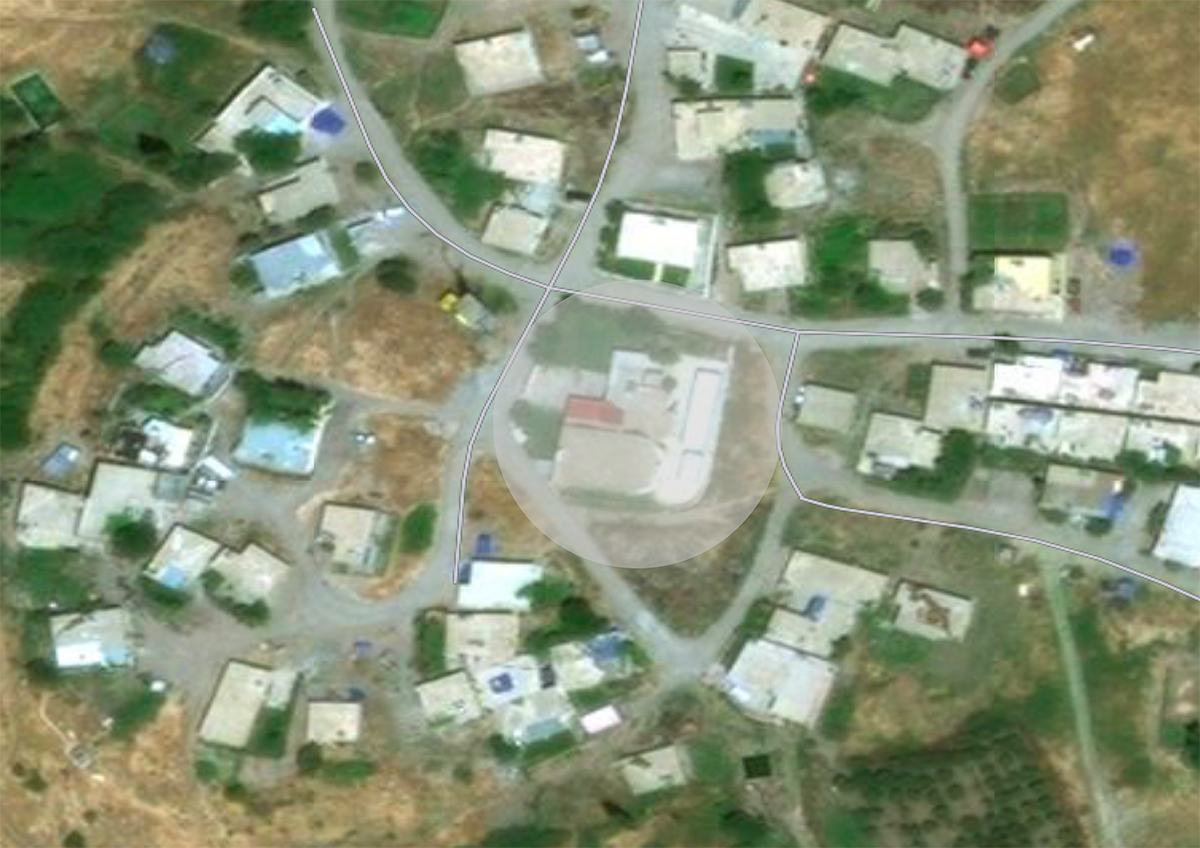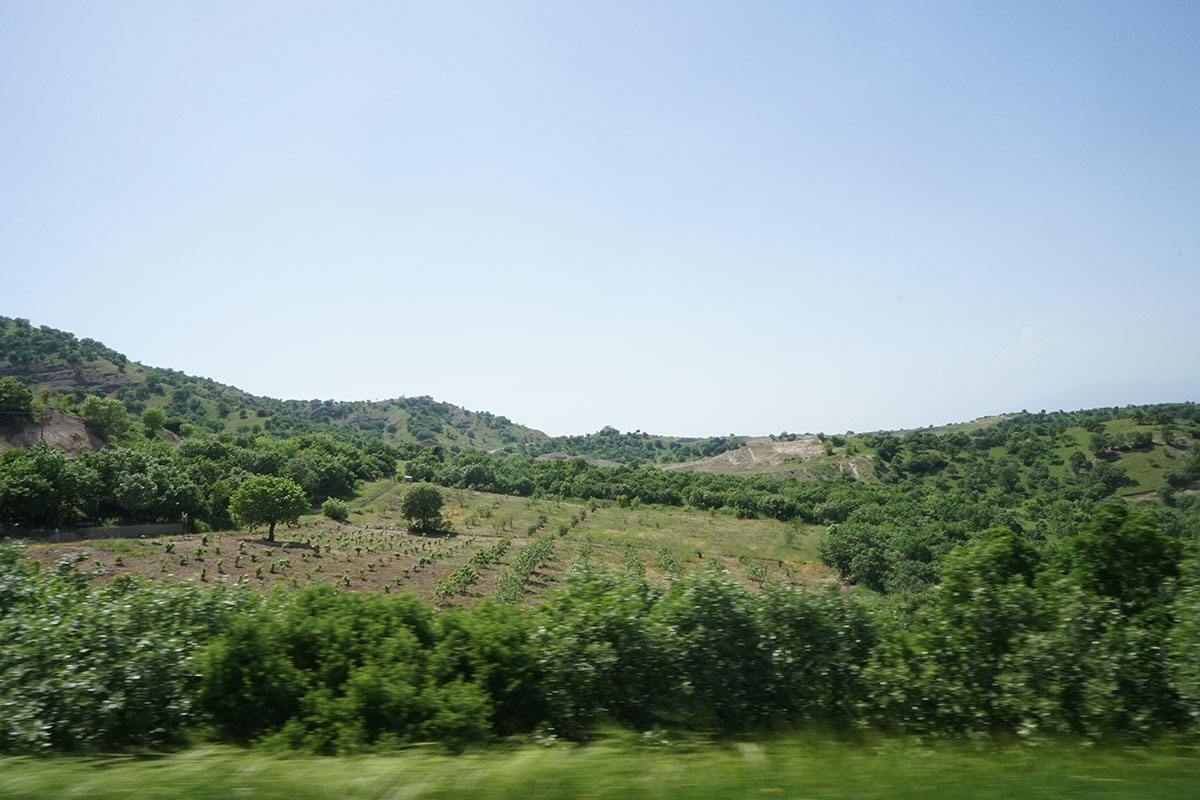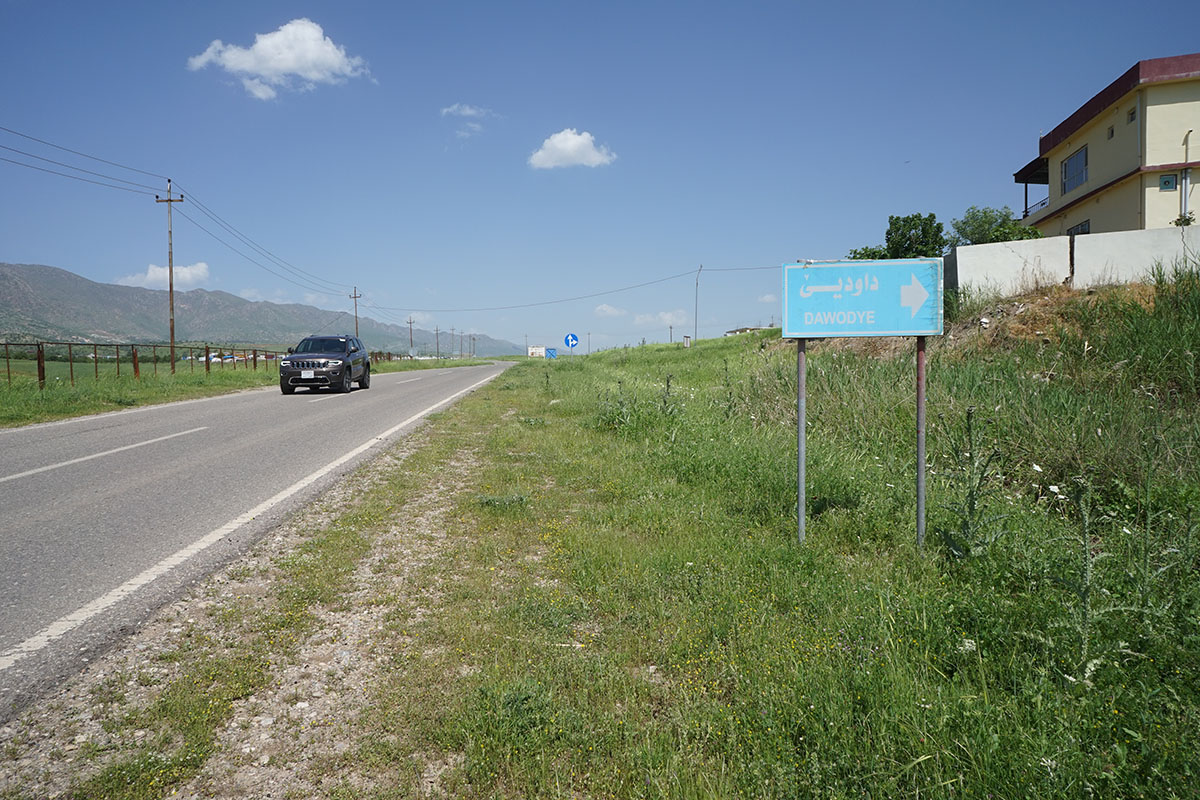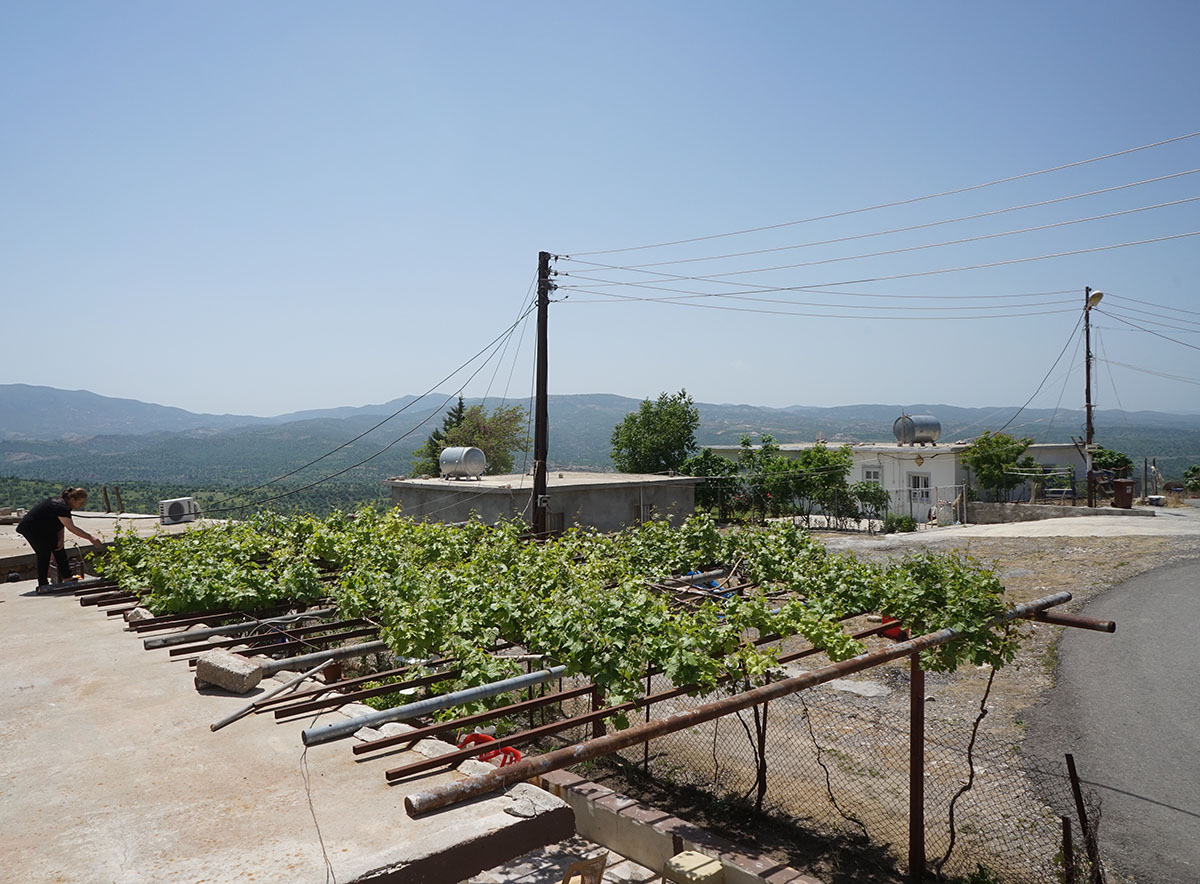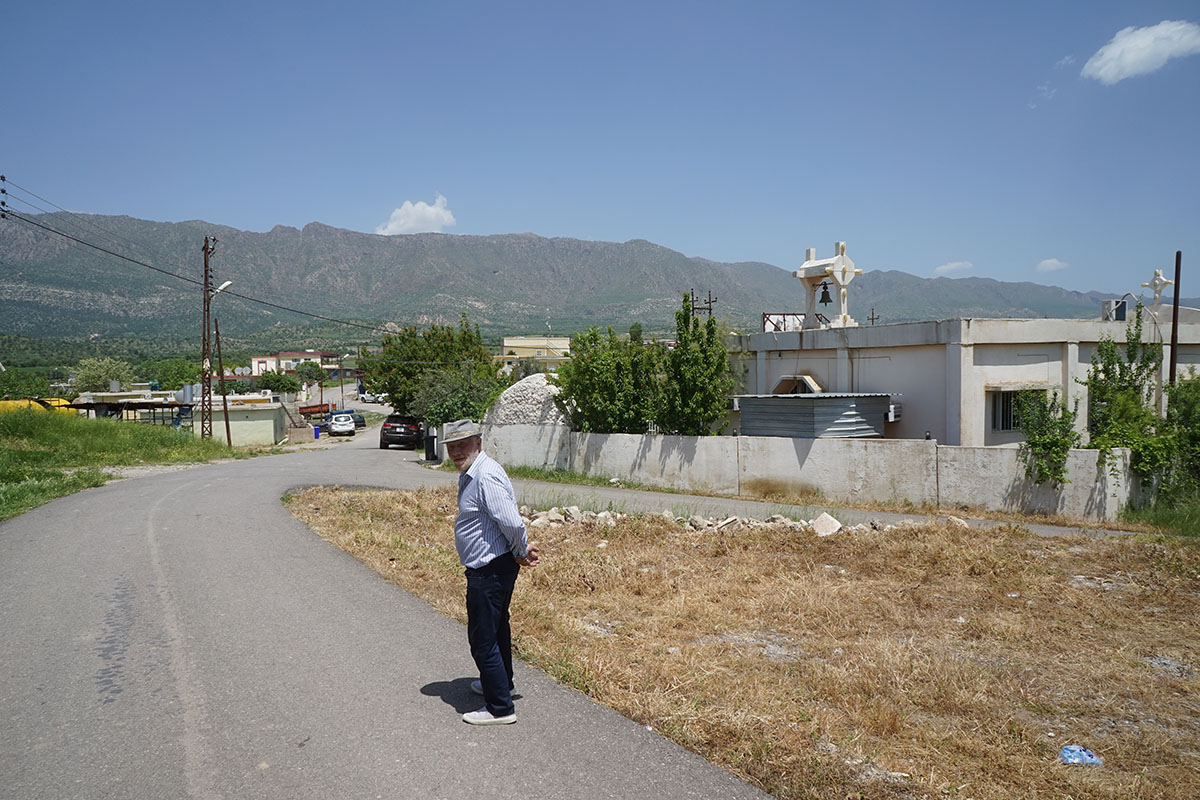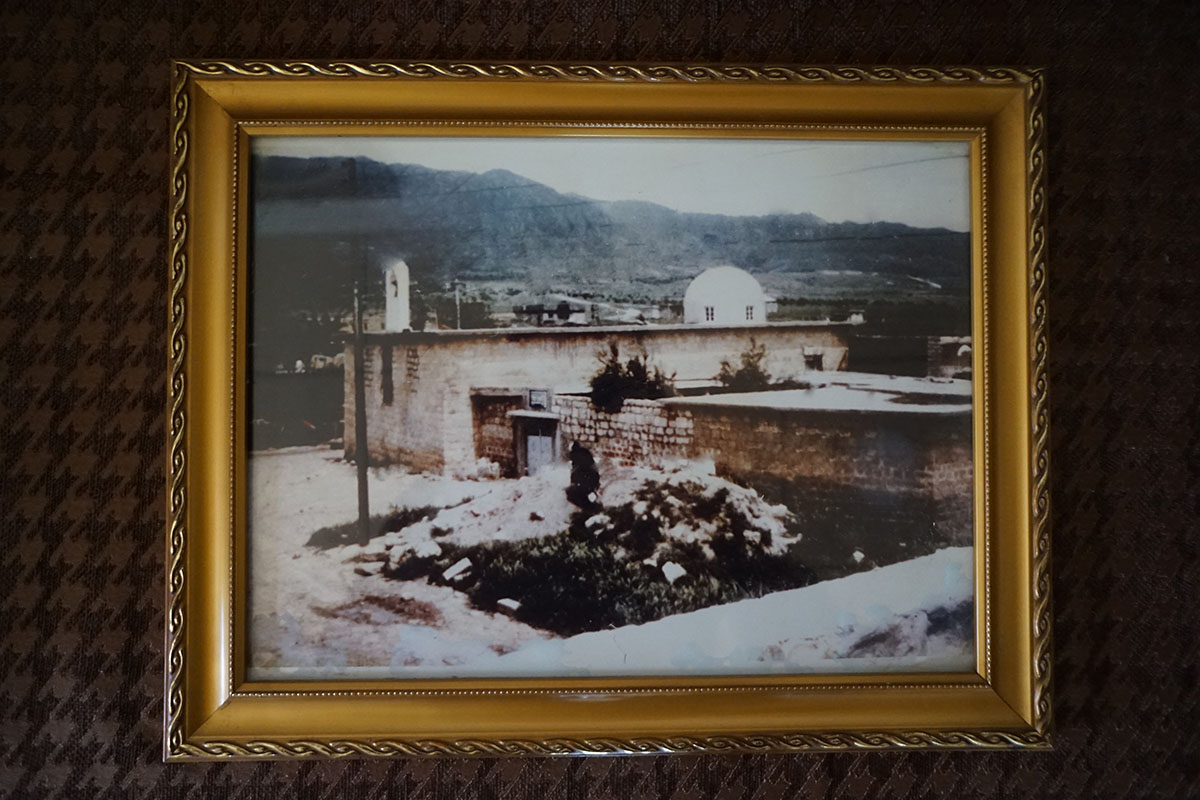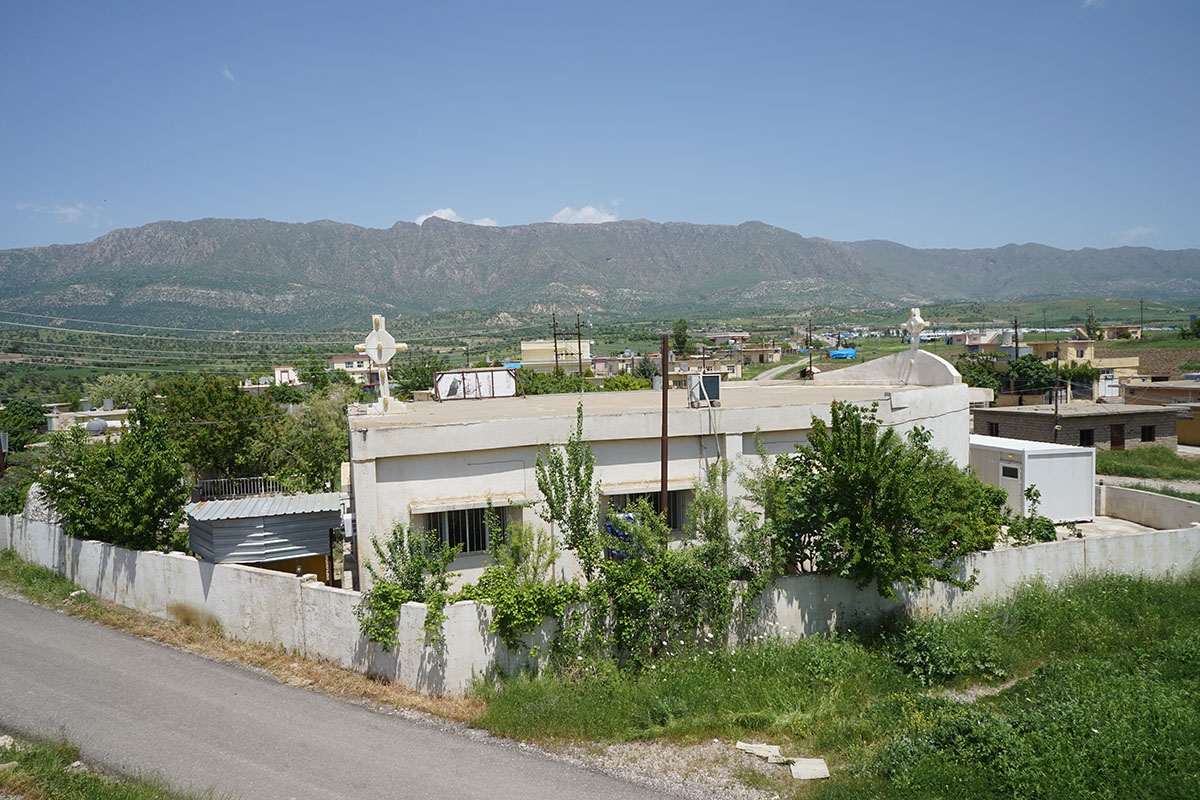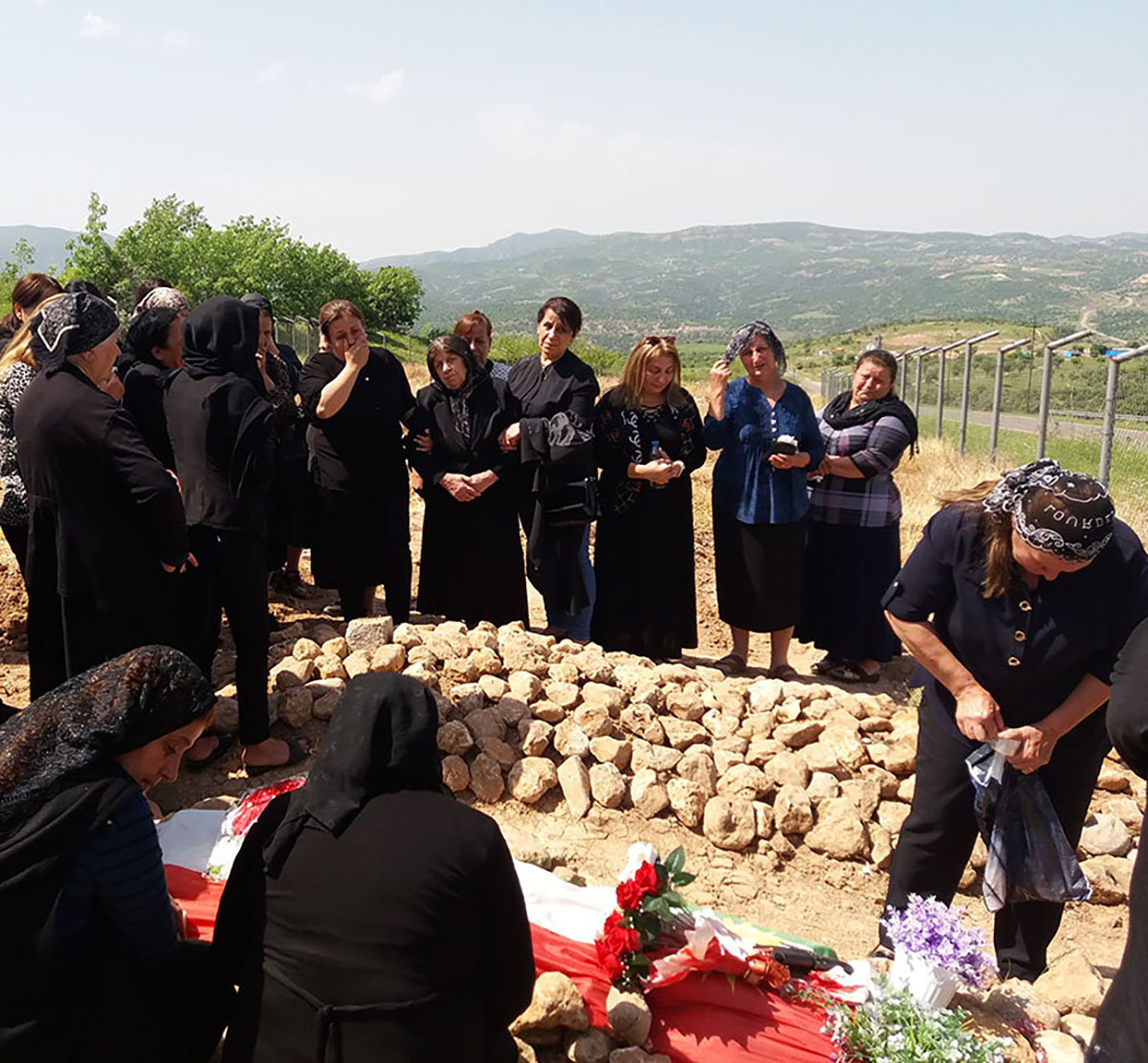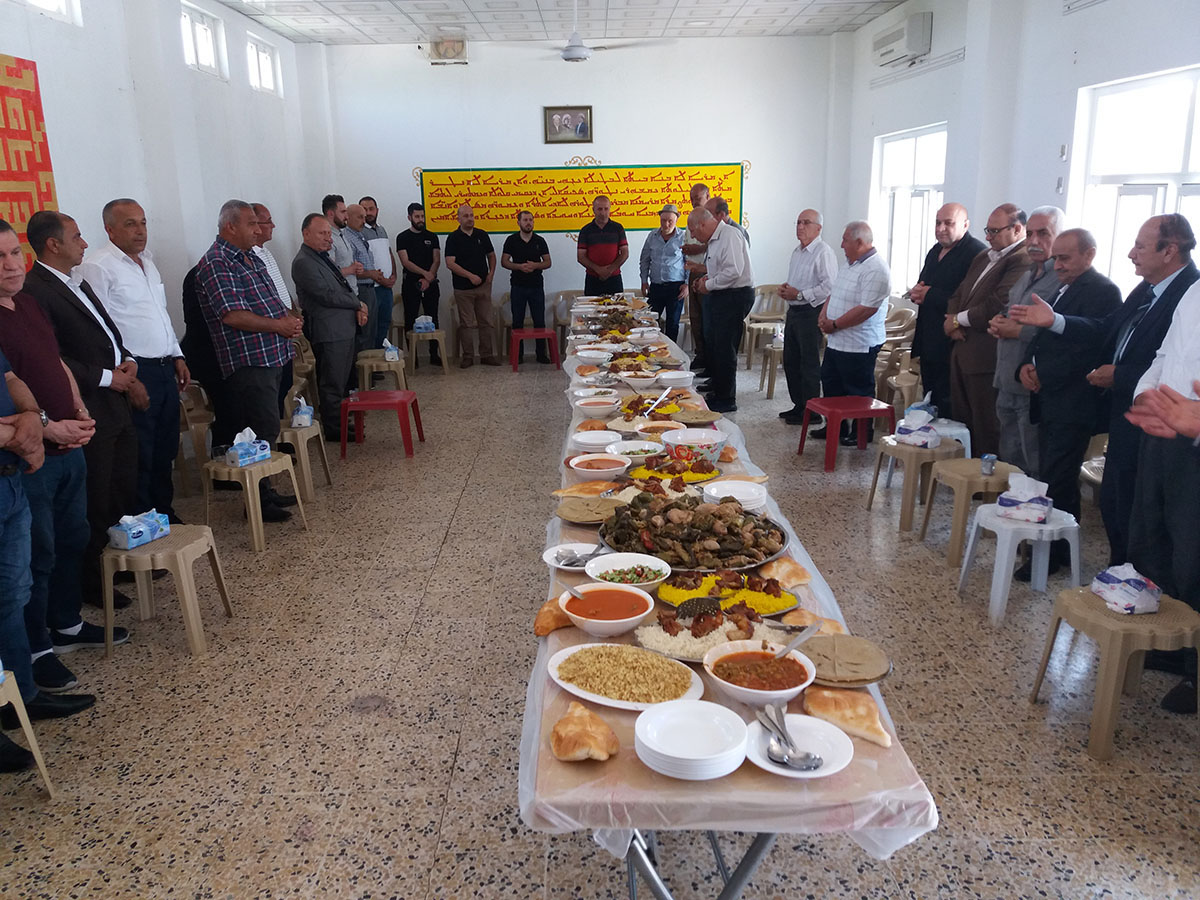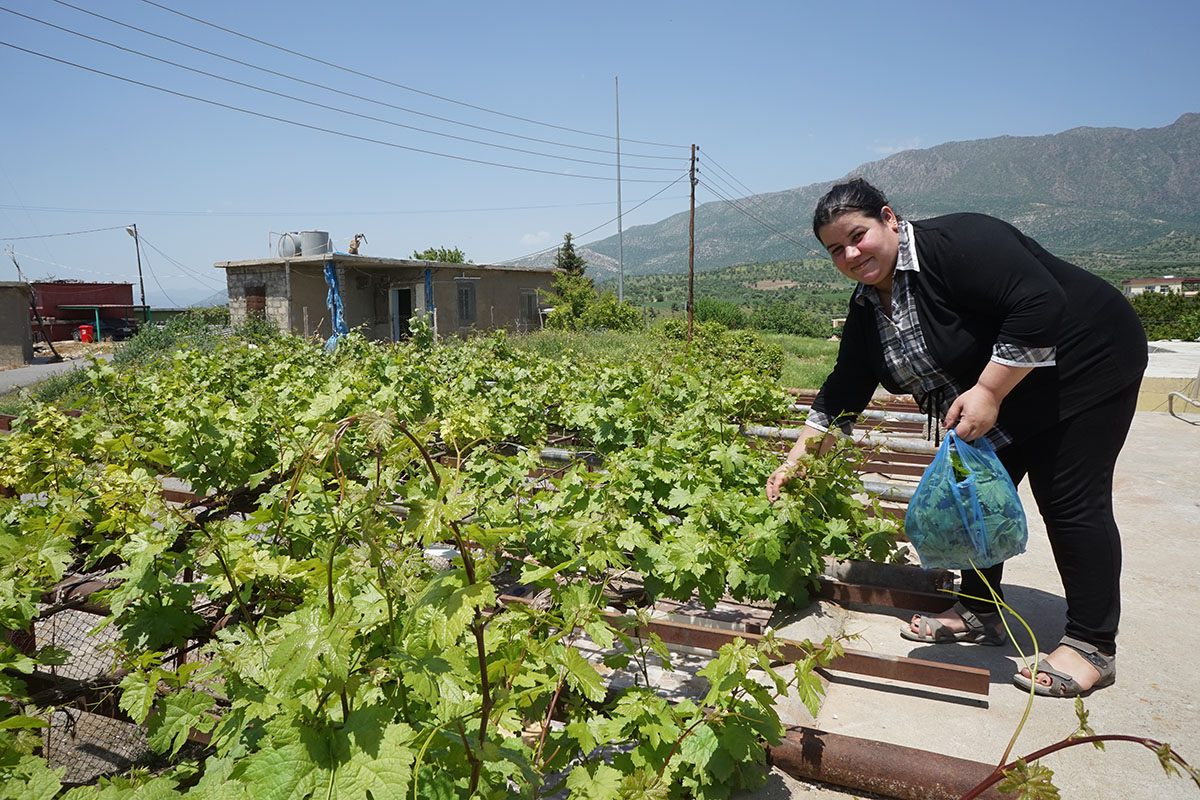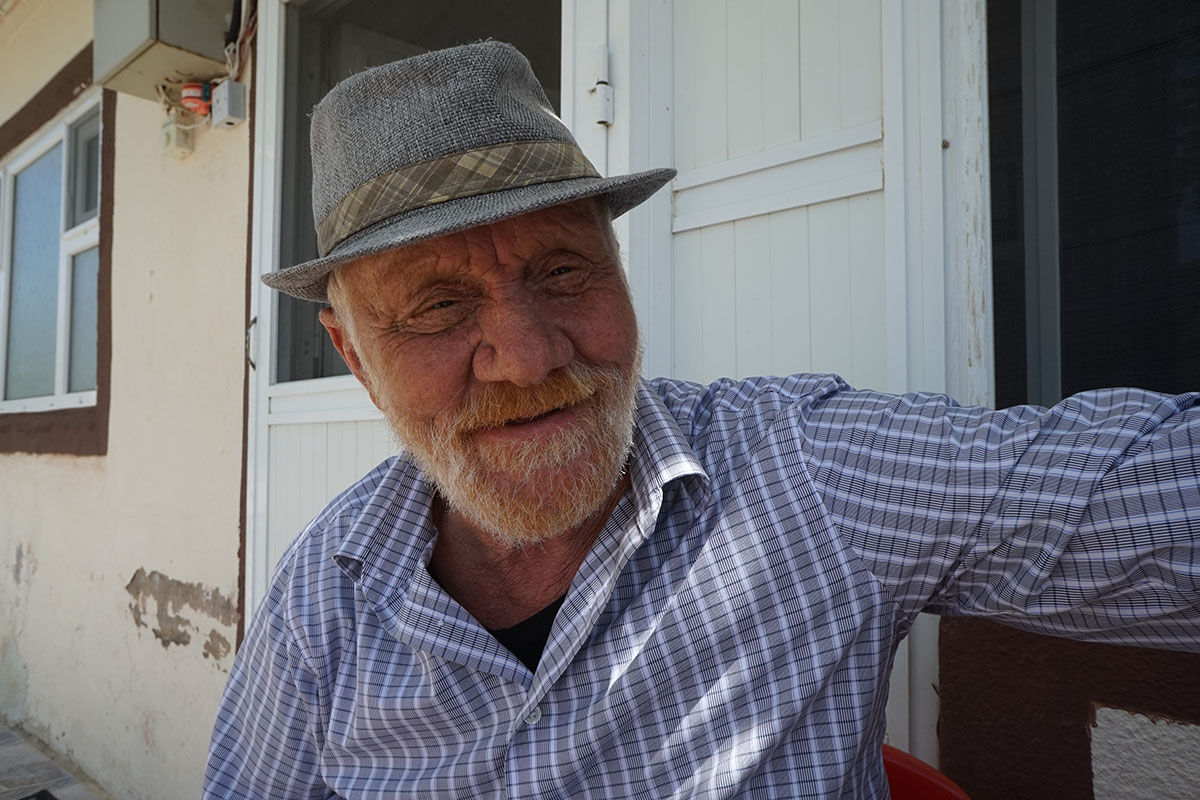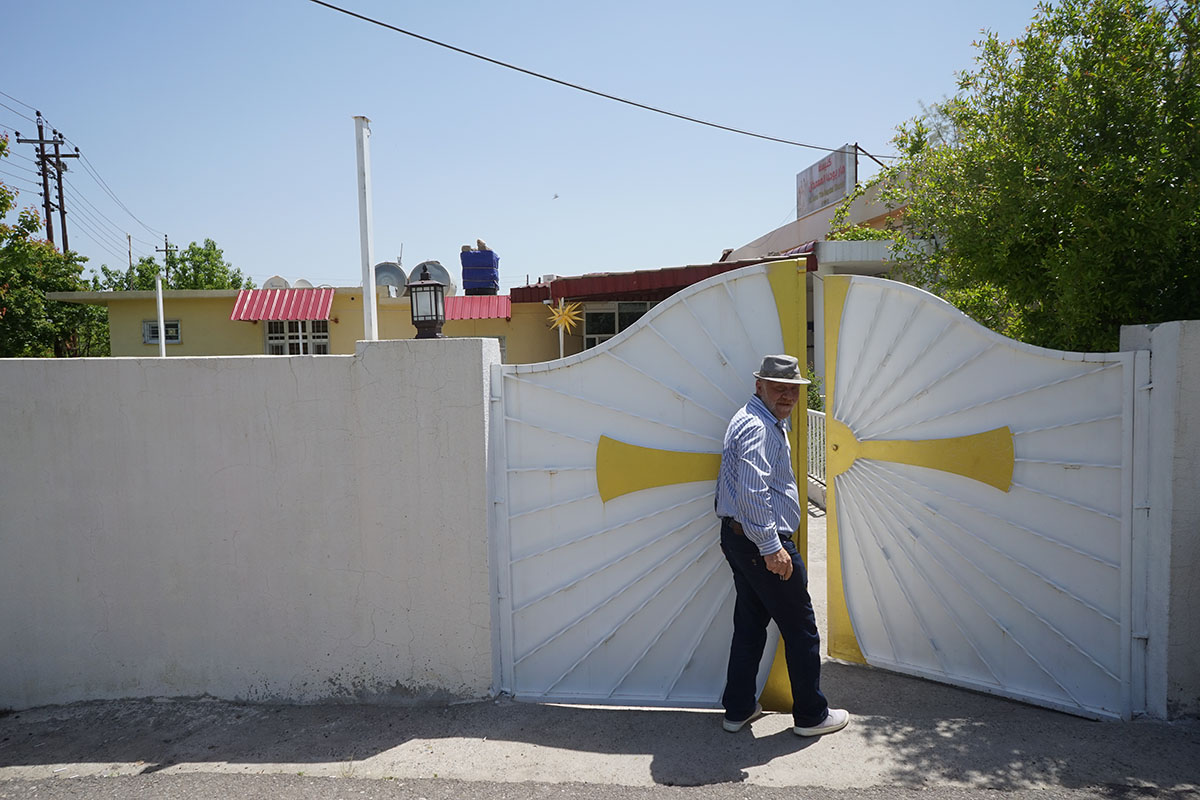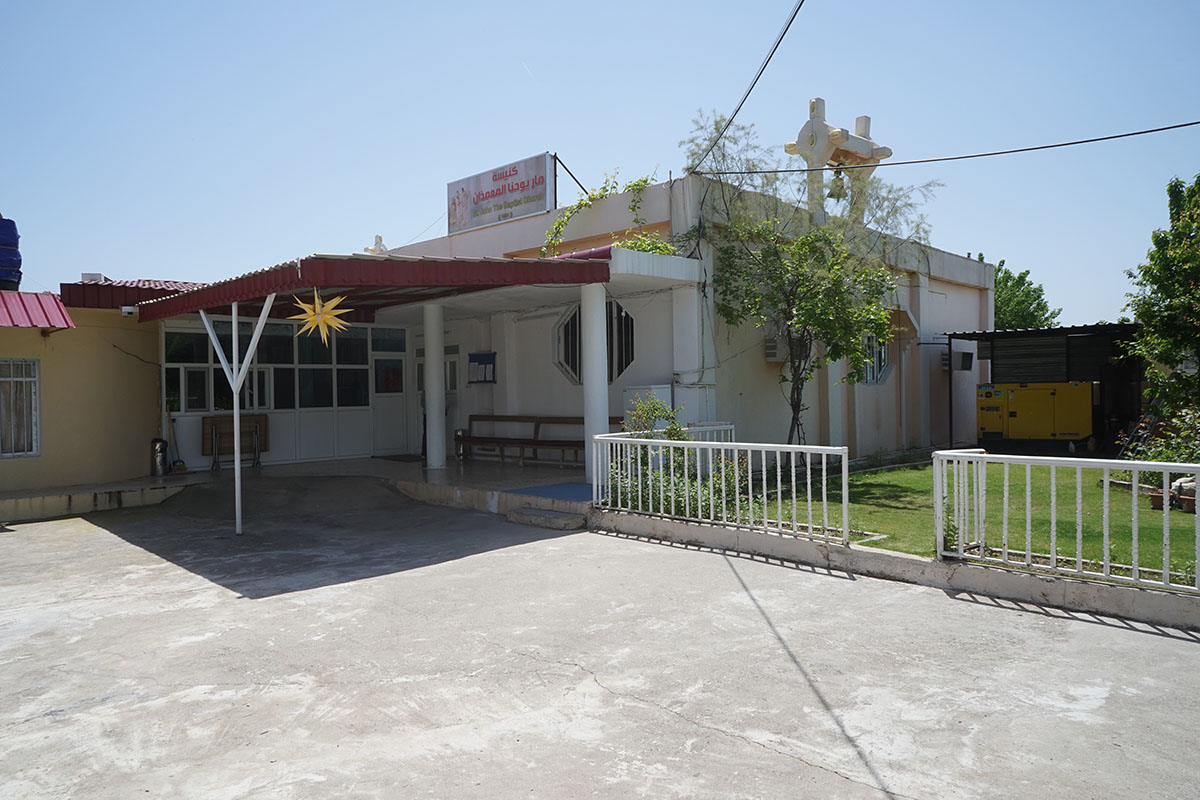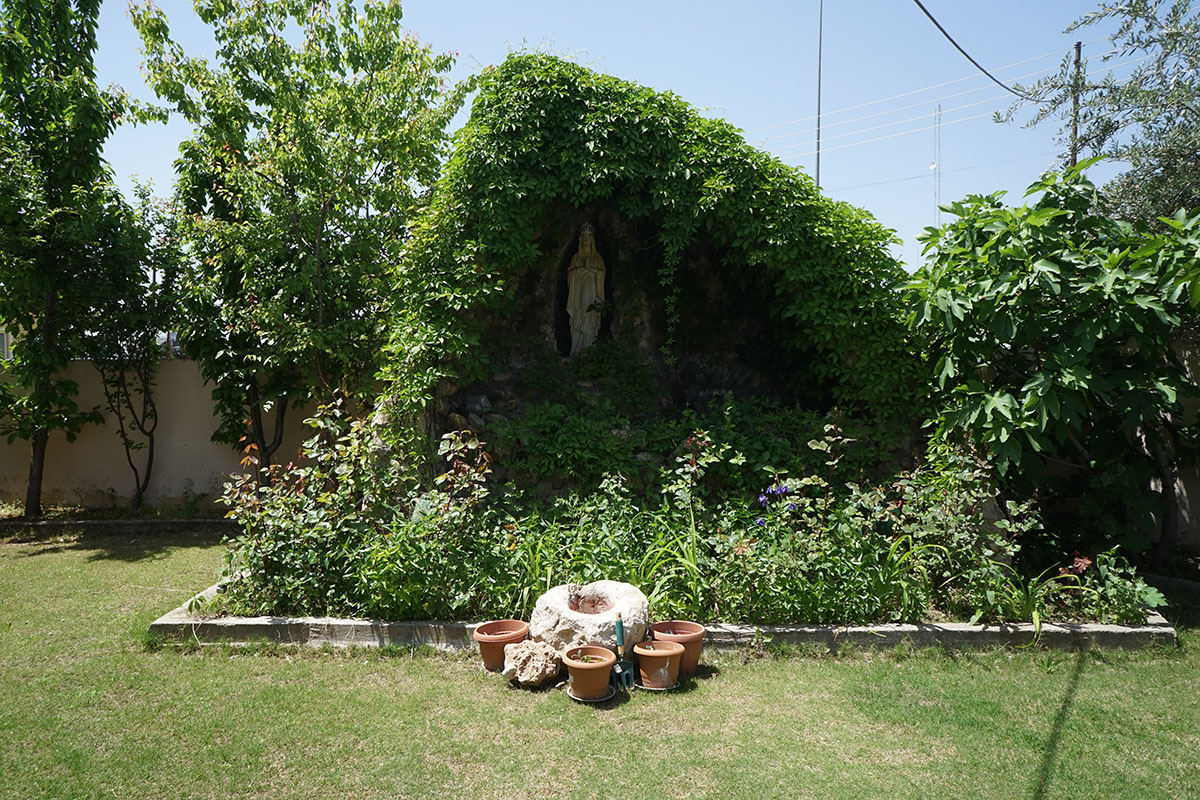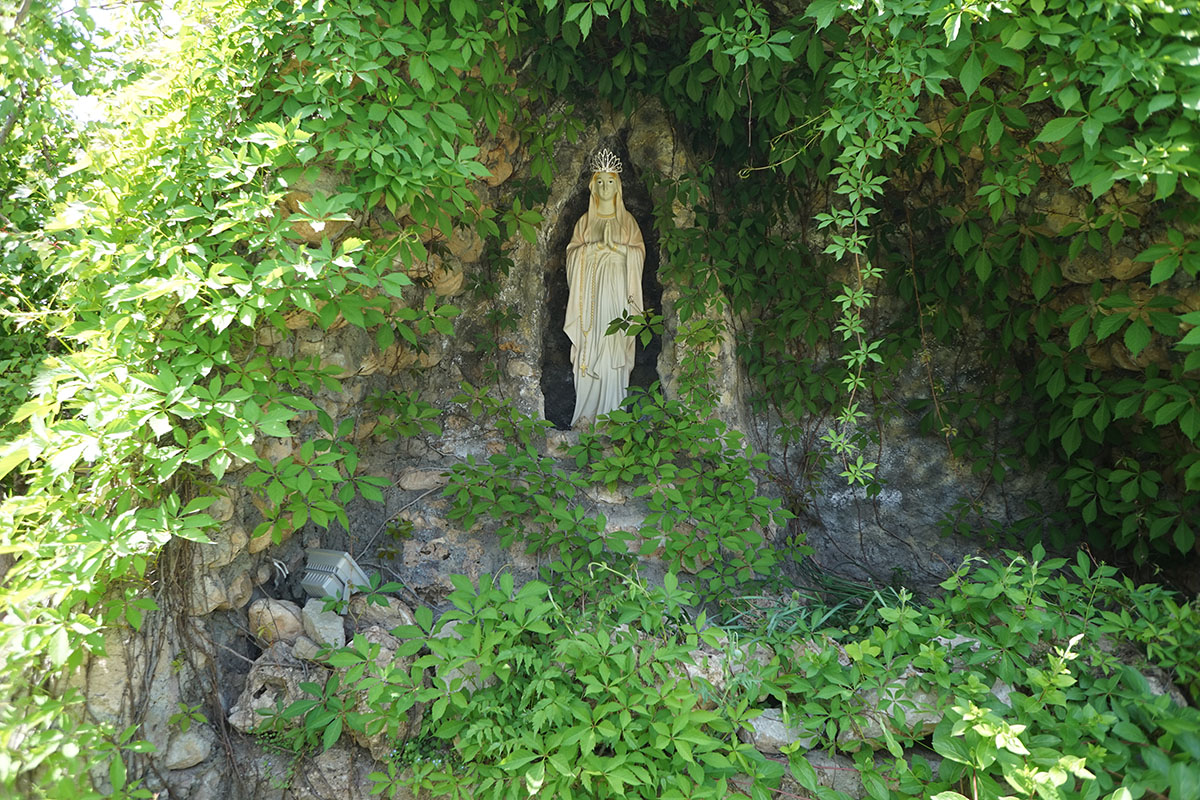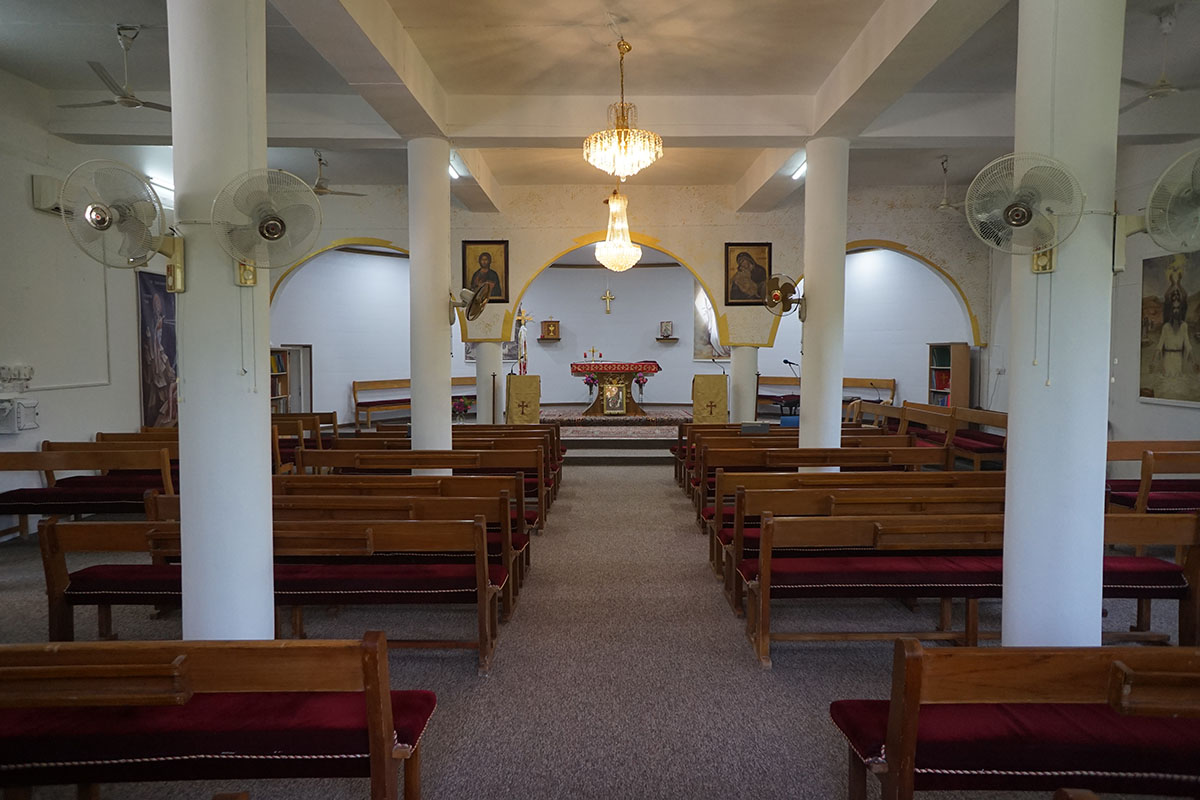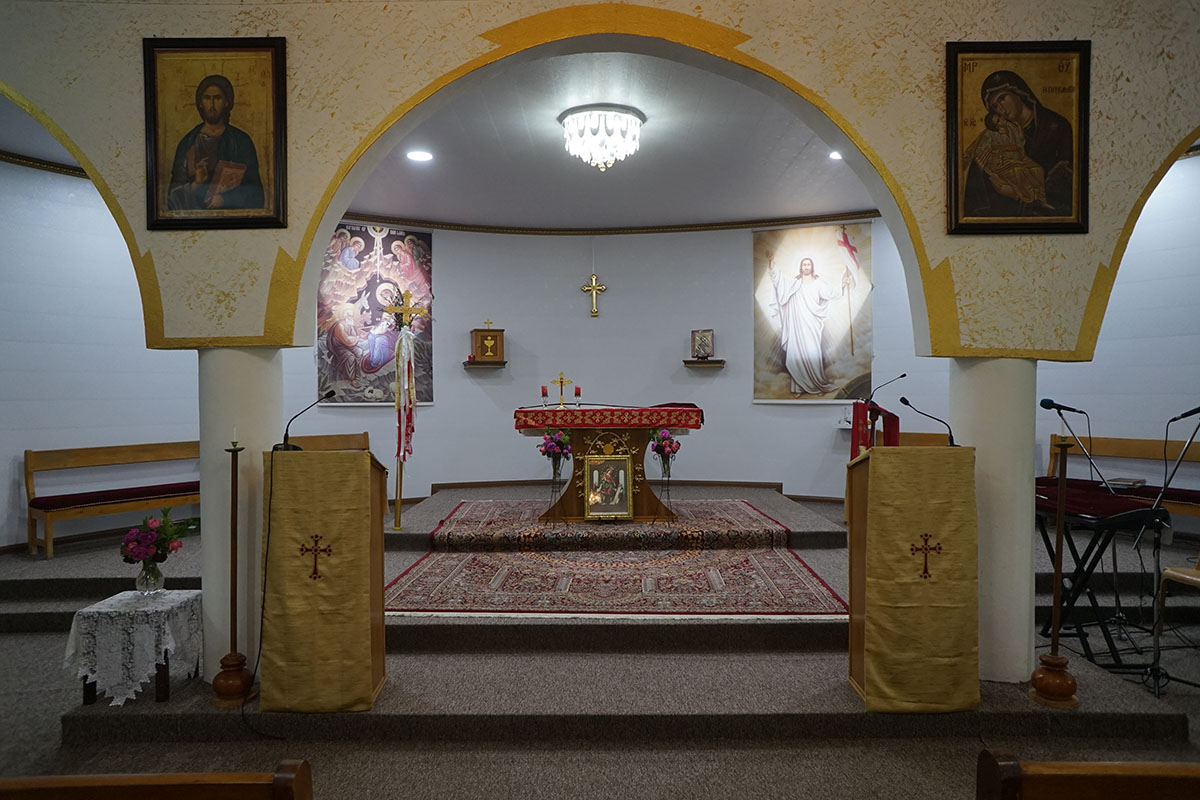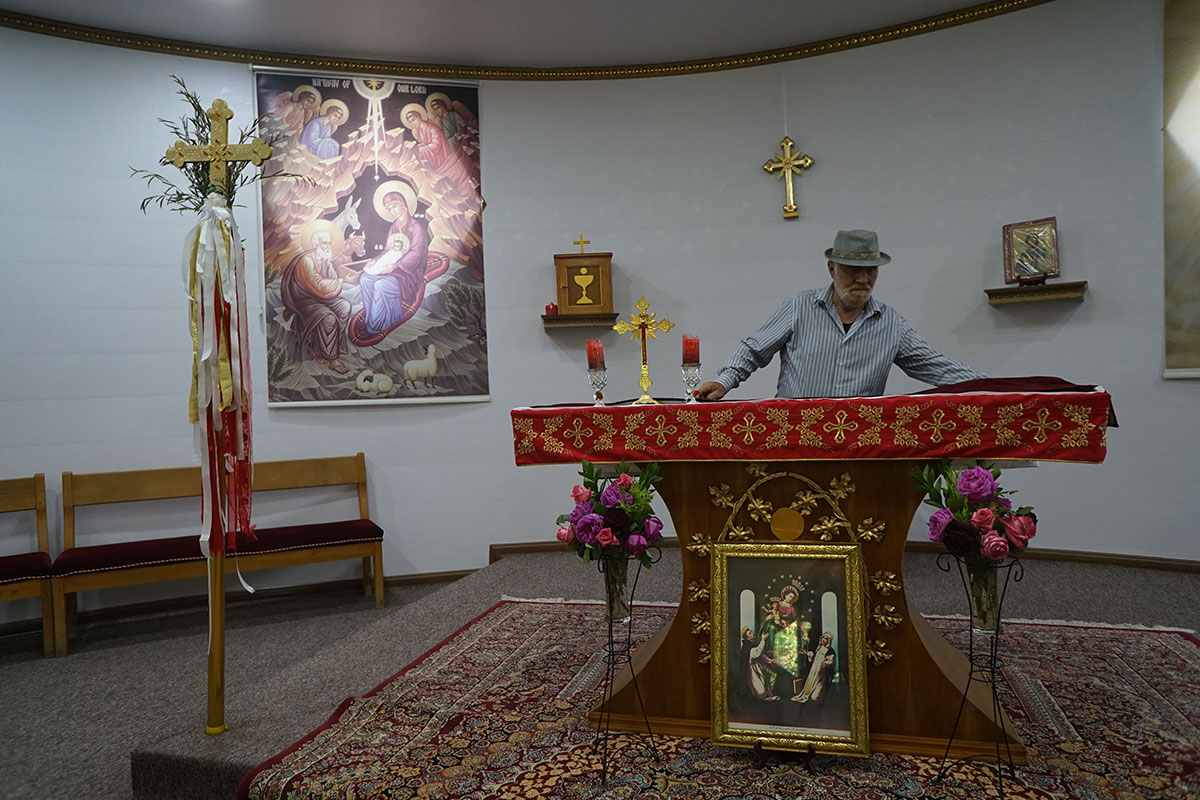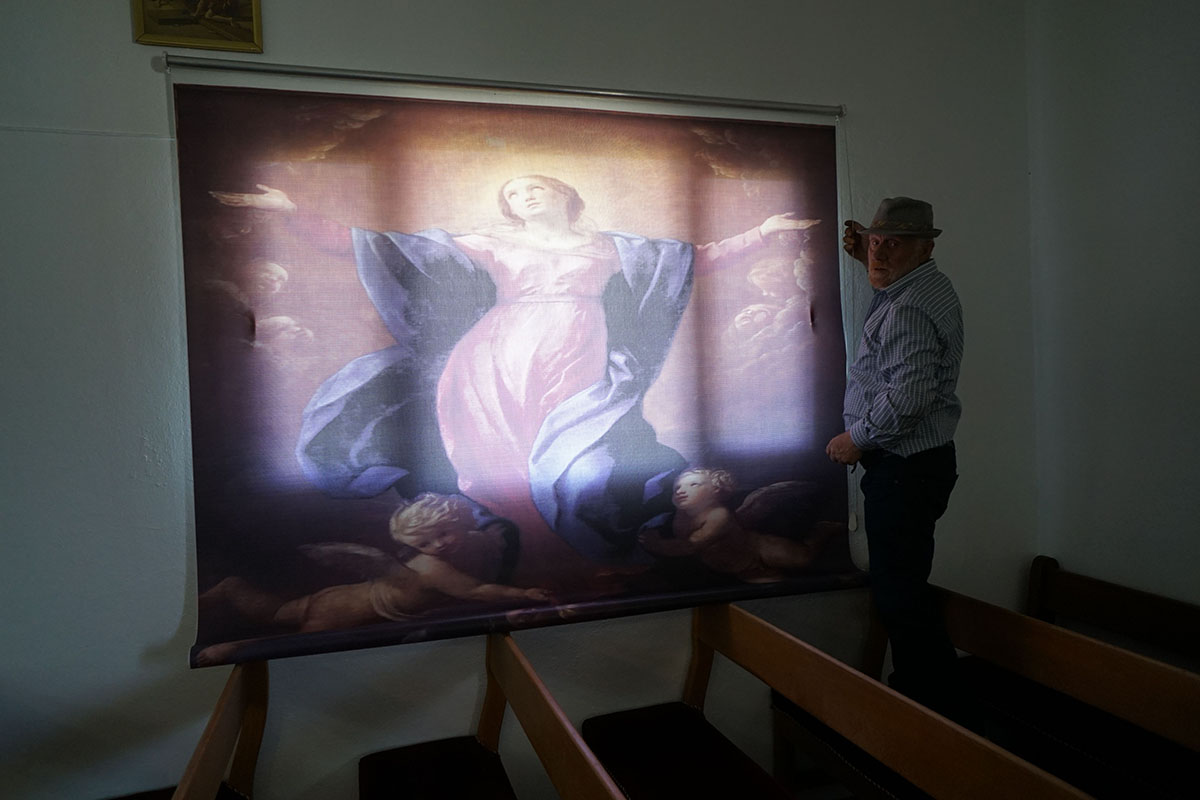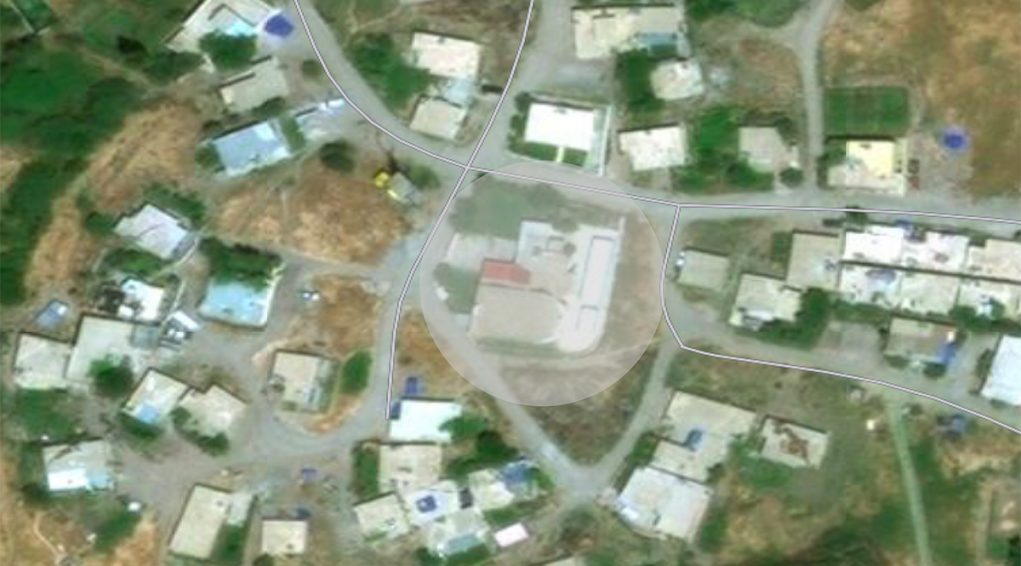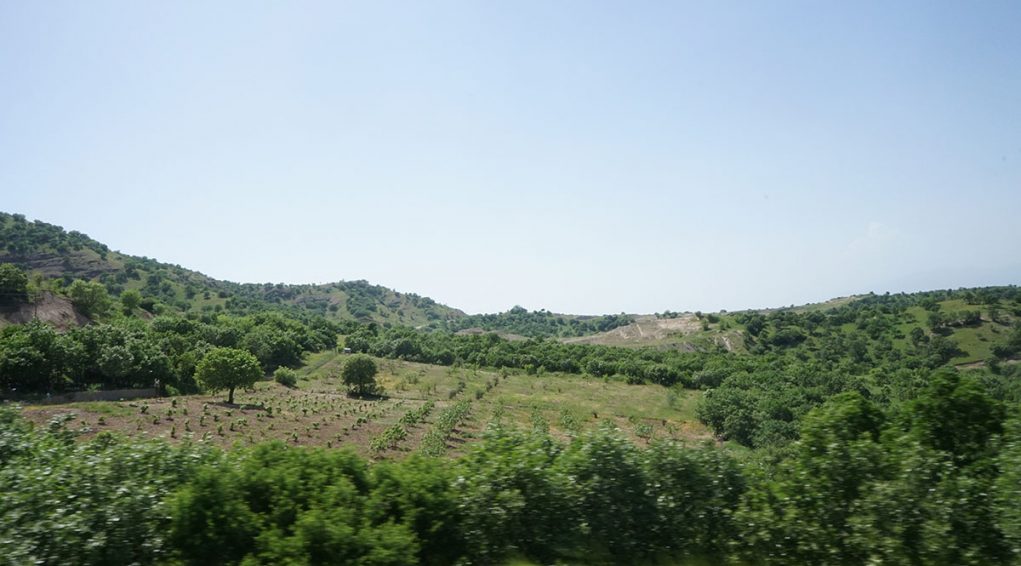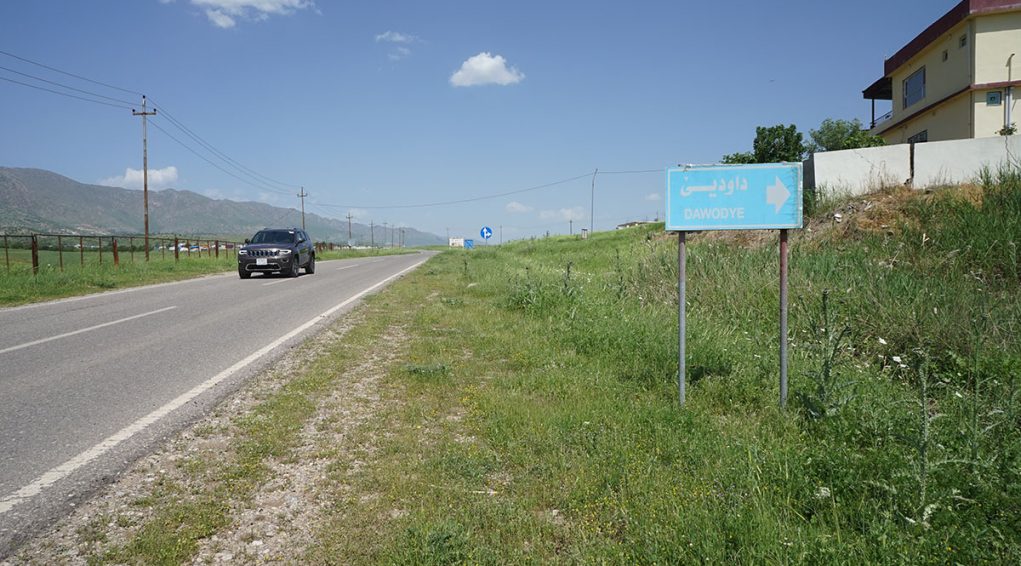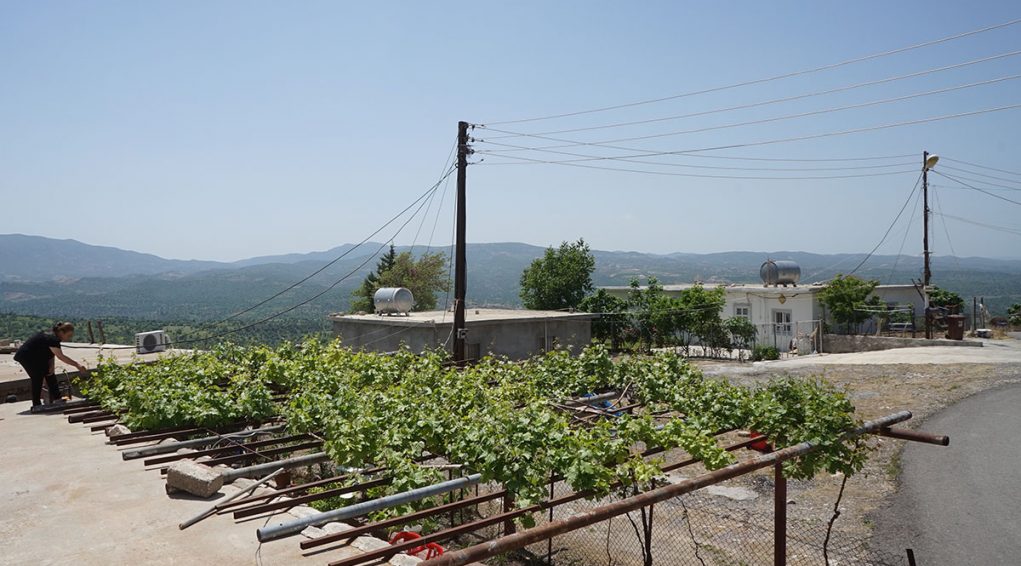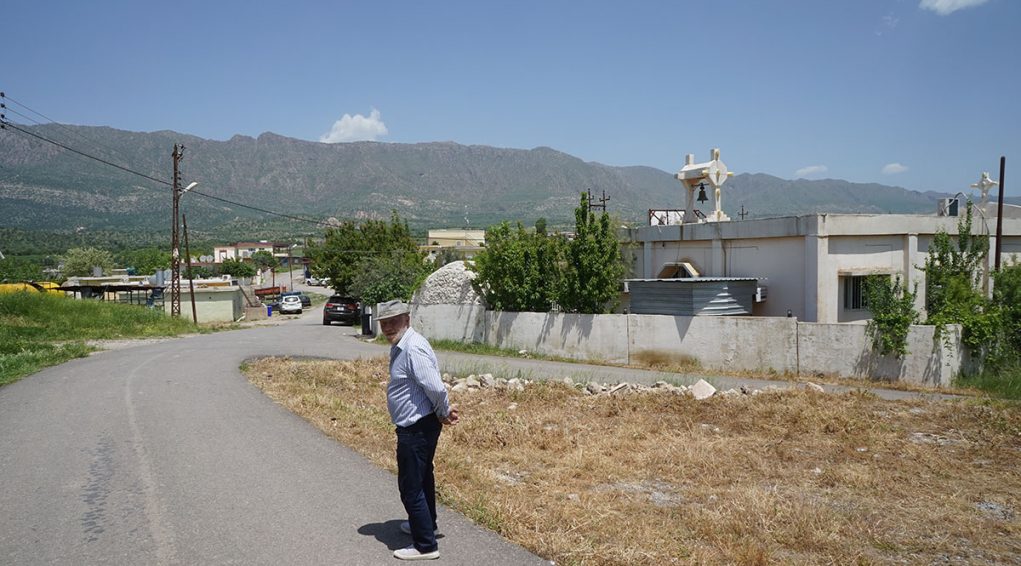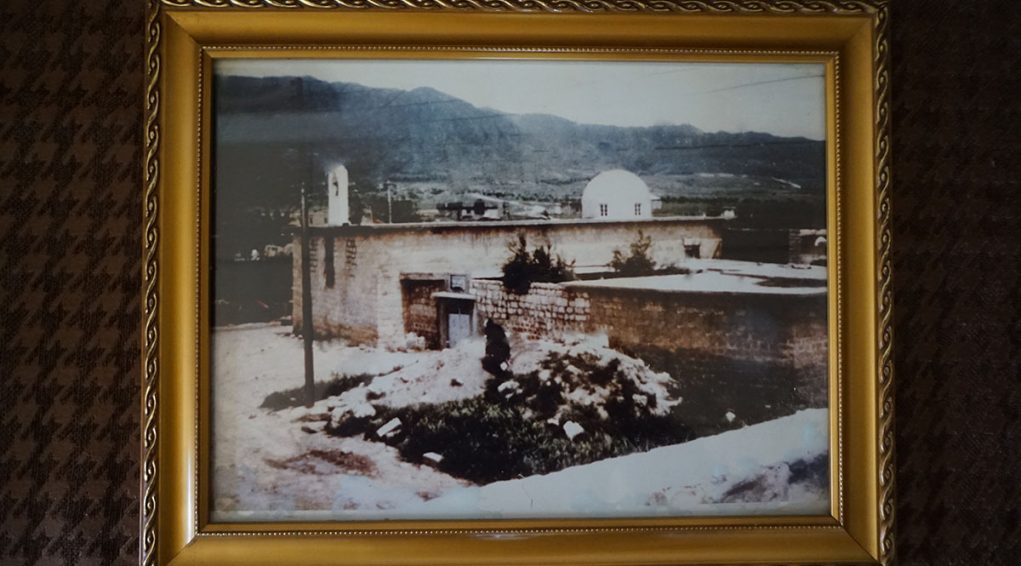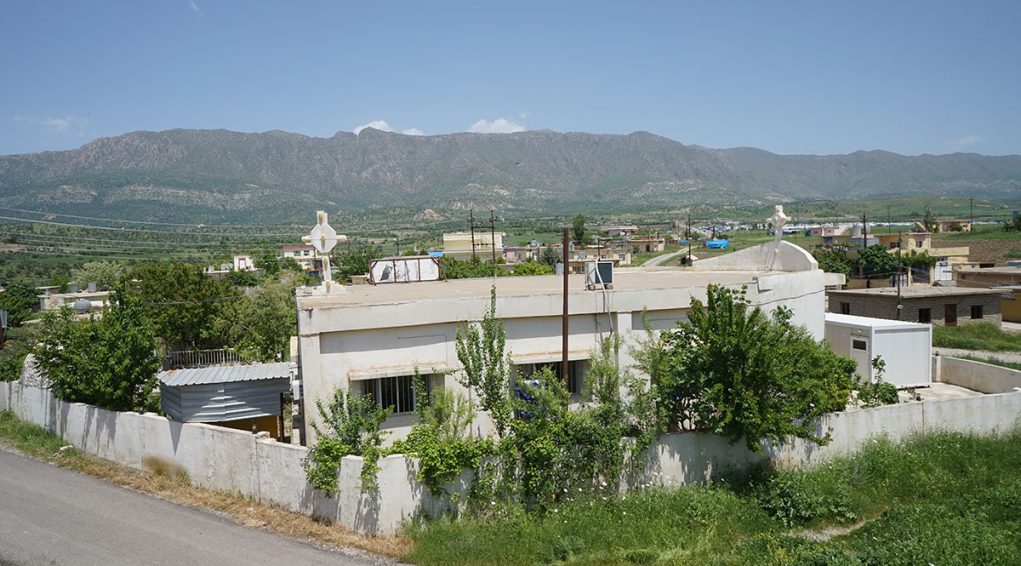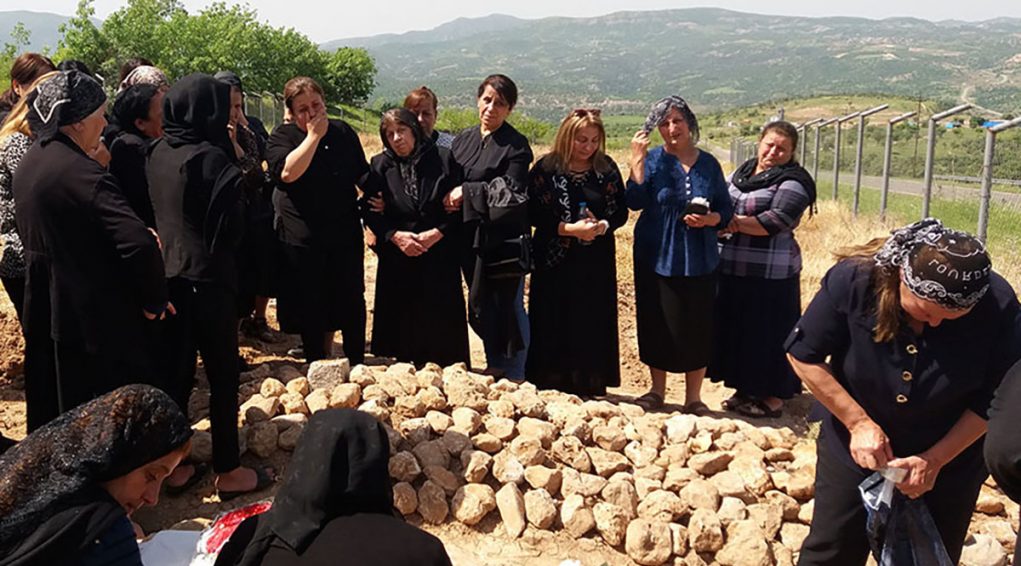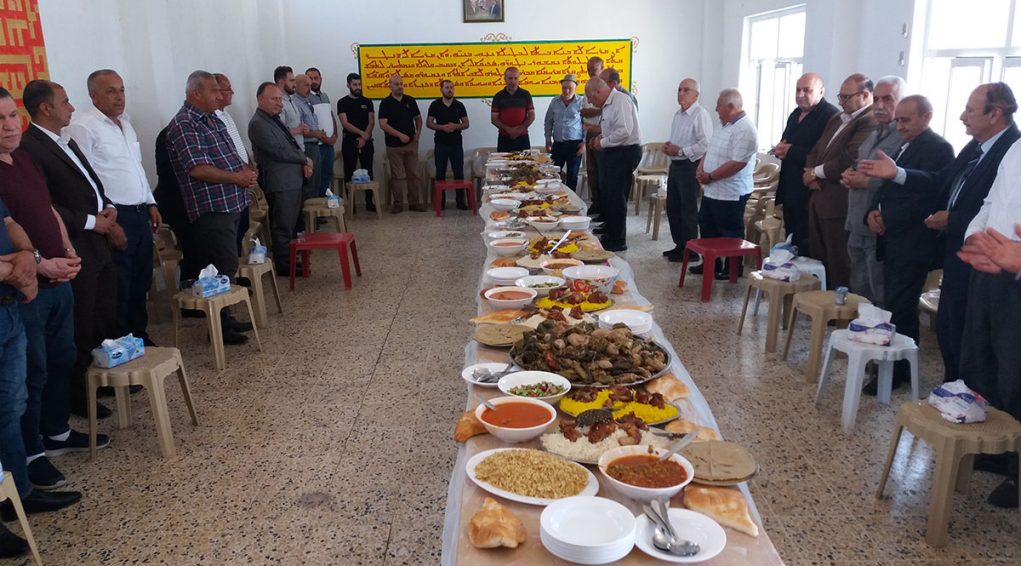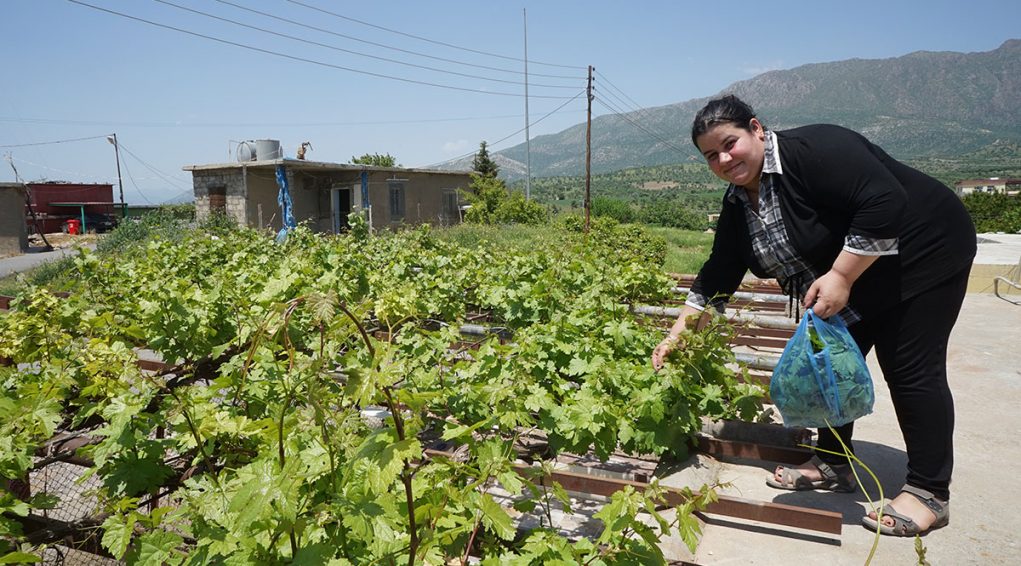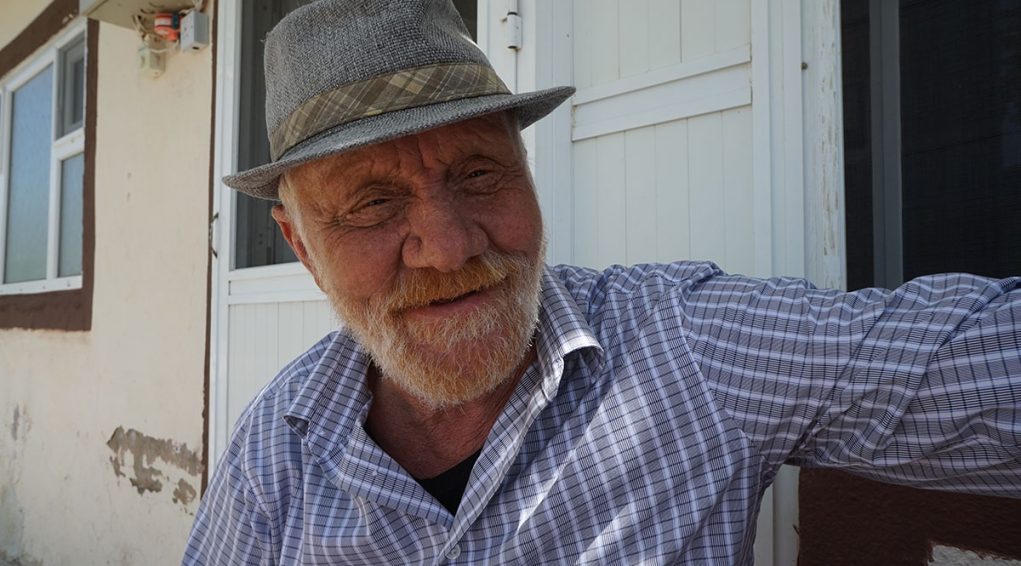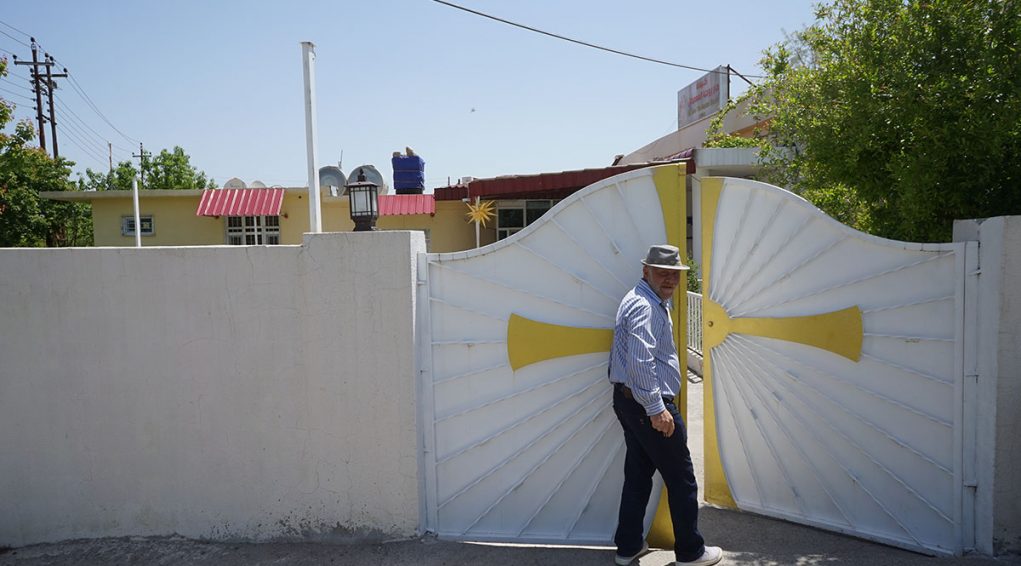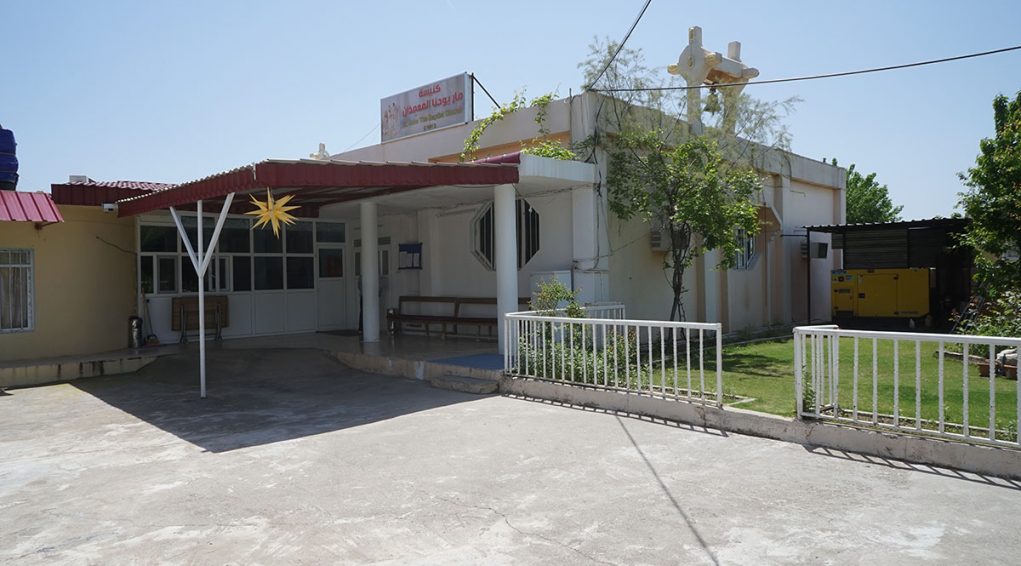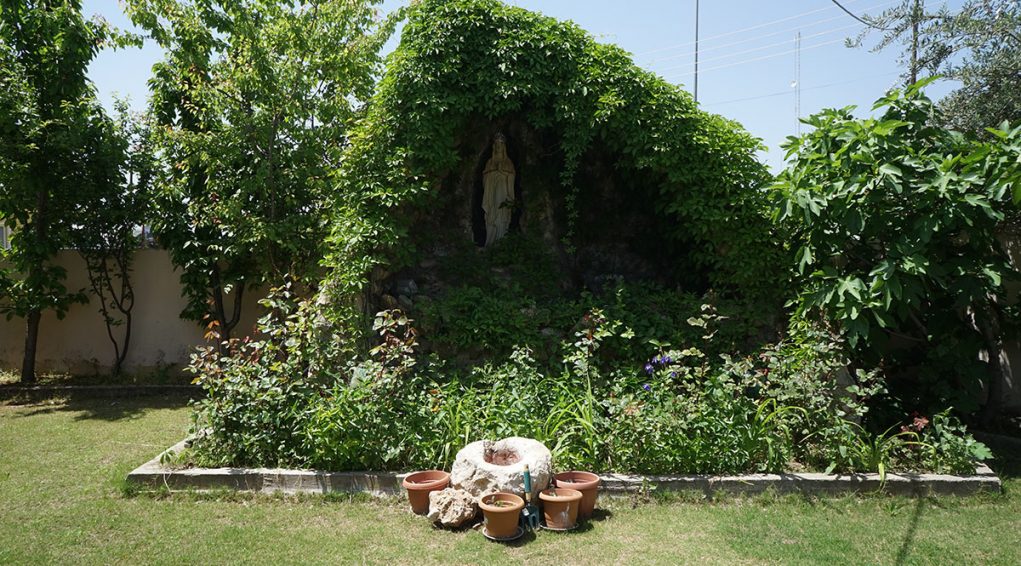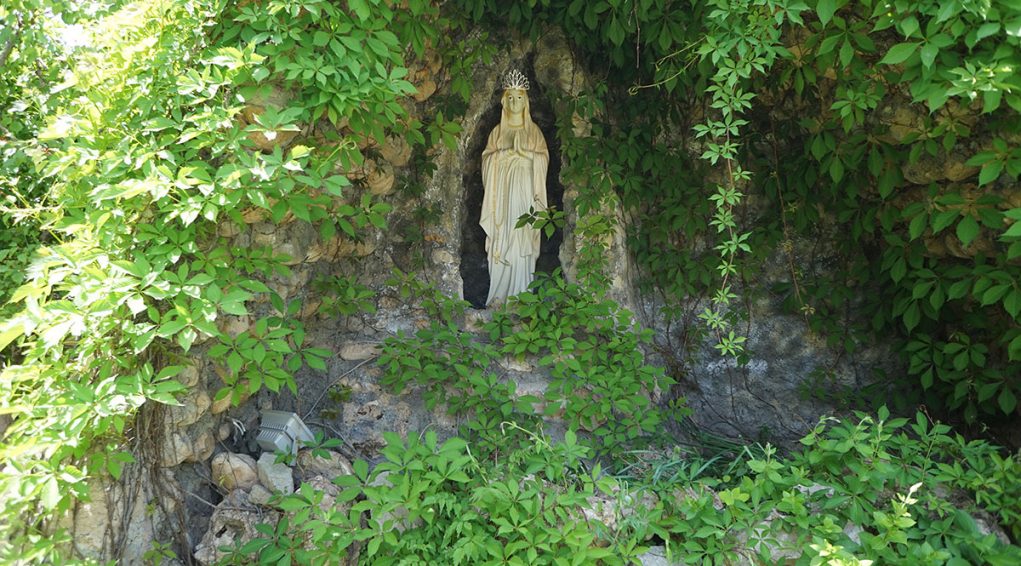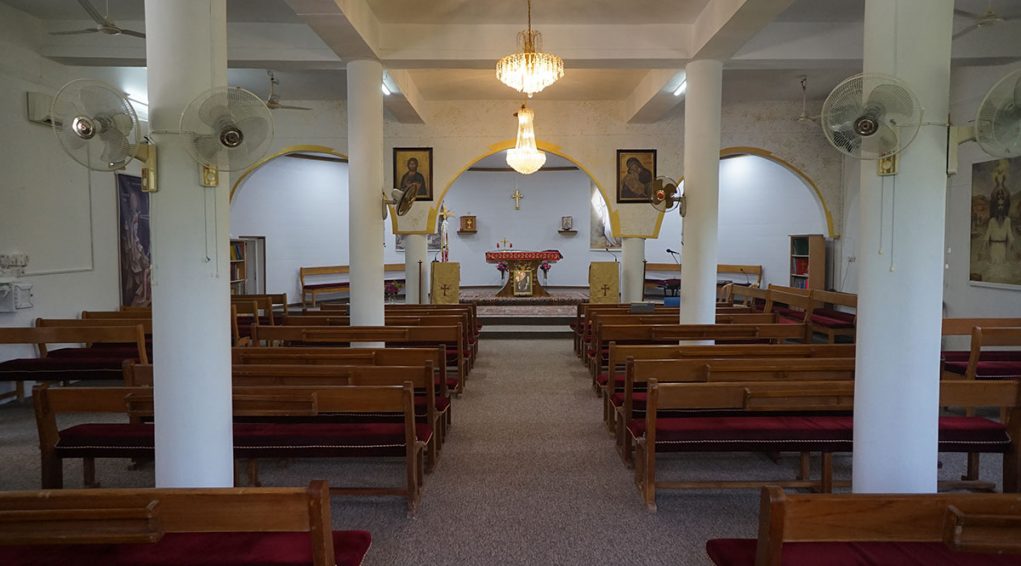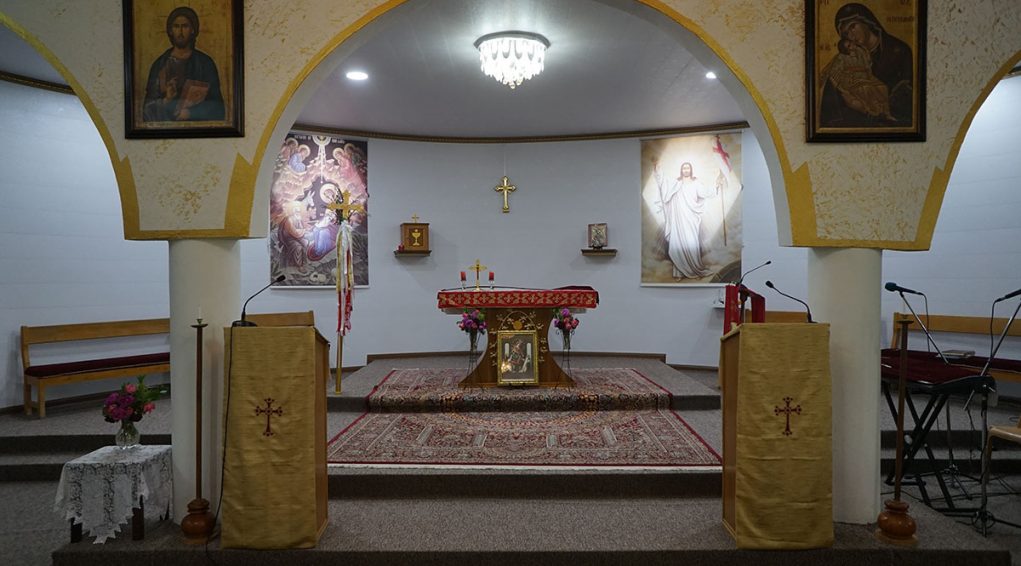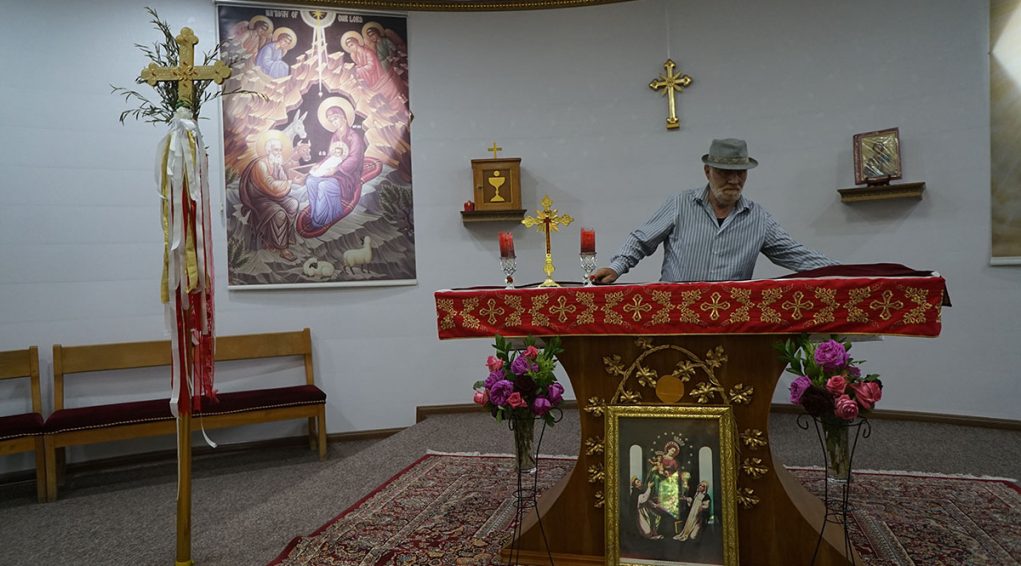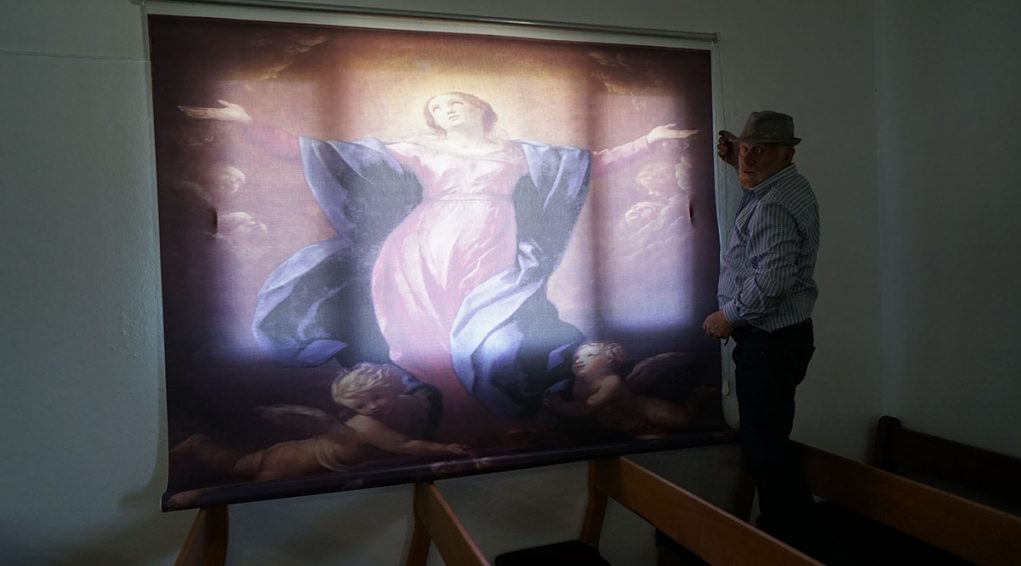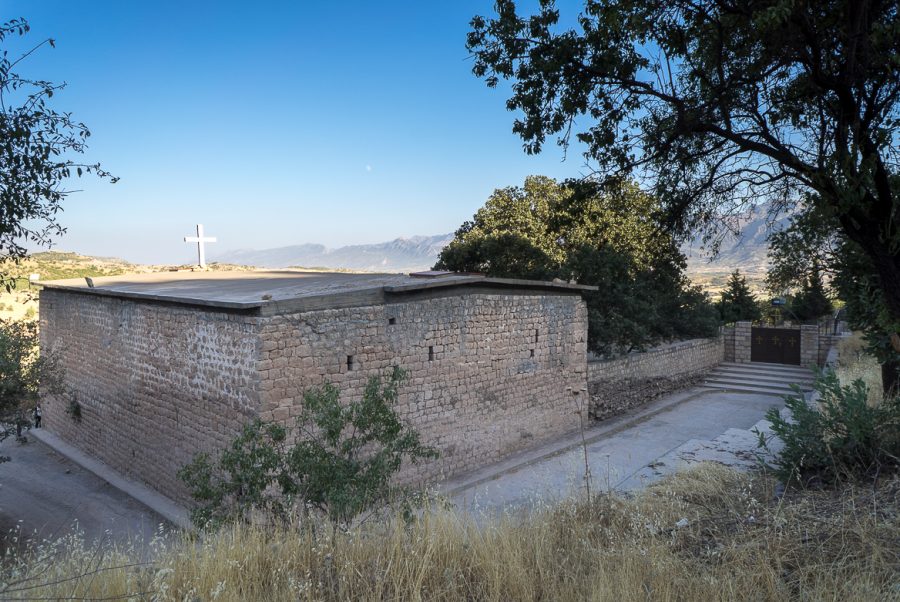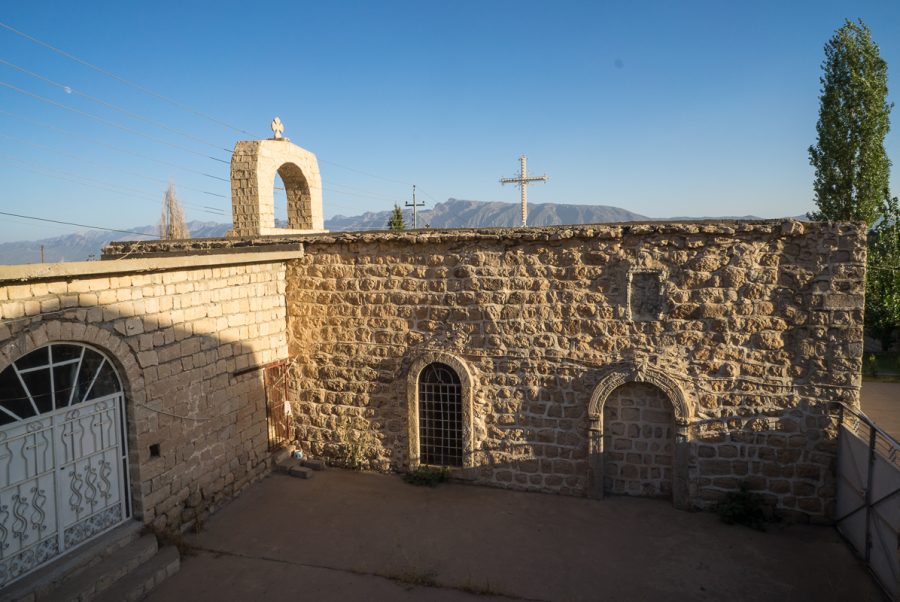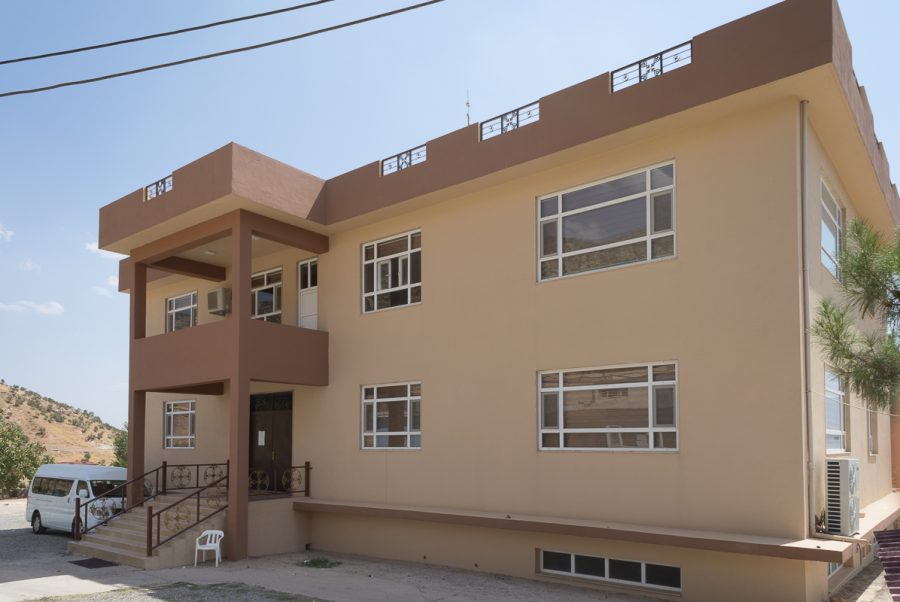The Mar Yohanna Al-Ma’Amadan (Saint John Baptist) church in Dawoodia
The Mar Yohanna Al-Ma’amadan (Saint John the Baptist) church in Dawoodia, at 37°05’21.5″N 43°13’15″E and 935 metres’ altitude. It is located at the centre of the village.
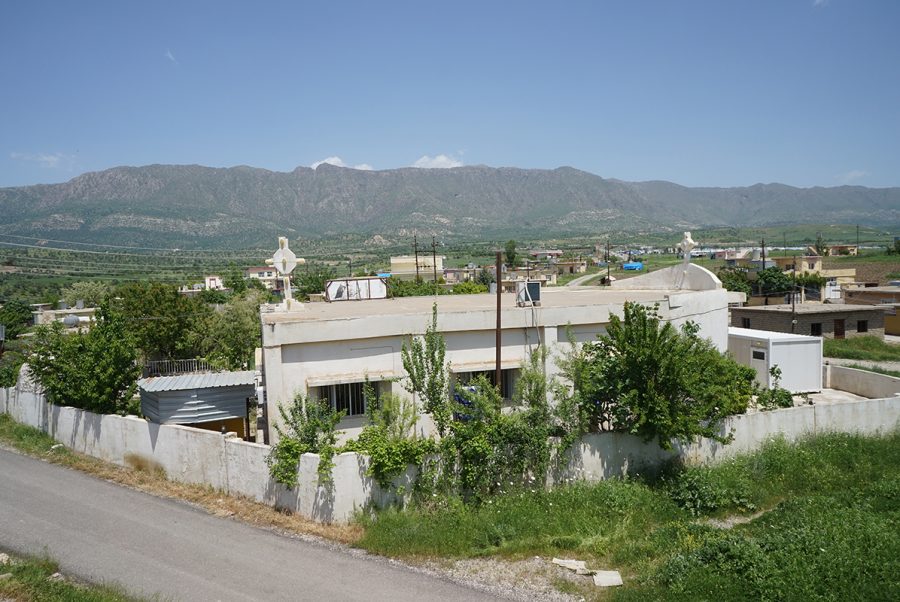
The Christianisation of Dawoodia followed a similar pattern to other villages in the region: a pre-existing Jewish community and early evangelisation by the apostles Thomas, Addai (Thaddeus or Jude) and Mari.
At the start of the 1960s, before the series of wars which for three decades opposed the Iraqi regime and the Kurdish separatists, there were around 450 Chaldean families and as many Assyrian families from the Church of the East in the (Chaldean) diocese of Amadia, in which the village of Dawoodia is located.
In 1988, the ancient Mar Yohanna Al-Ma’amadan church in Dawoodia was destroyed and the villagers were forced to flee. The new (current) Mar Yohanna church was built in 1991. The revival of this Chaldean village is a symbol of the Christian revival in Iraqi Kurdistan. In May 2019, 50 families were living in Dawoodia. 25 families from this village are now part of the diaspora.
| Pic : The Mar Yohanna Al-Ma’amadan (Saint John the Baptist) church in Dawoodia, located at the heart of the Sapna valley. May 2019 © Pascal Maguesyan / MESOPOTAMIA |
Location
The Mar Yohanna Al-Ma’amadan (Saint John the Baptist) church in Dawoodia, at 37°05’21.5″N 43°13’15″E and 935 metres’ altitude, located in the centre of the village. Here we are in the valley of Sapna, in a magnificent mountainous agricultural zone, between Mount Chamatine to the north which stands at 3,000 metres altitude and Mount Kara to the south at the same height.
Dawoodia is situated at the heart of Iraqi Kurdistan is a sensitive geopolitical zone 30 km to the south of Turkey on the road leading towards the point where the Iraqi, Syrian and Turkish borders converge. The village is just 11 km to the west of Ar Aden (former episcopal residence) and 33 km to the west of Amadia.
Fragments of Christian history
The Christian history of Dawoodia is very similar to that of other villages in the region. A pre-existing Jewish community, and early evangelization under the influence of apostles Thomas, Addai (can also be the apostle Jude, also known as Thaddeus in the Gospel) and Mari. Throughout a 4th century full of vocations, the tradition relates many stories of martyrs persecuted by the Persian King Shapur II. And all along these times of the first Christians, hermitages and primitive sanctuaries developed, at the very same place where Assyrian churches and monasteries progressively raised. Throughout the centuries and until the fall of the Ottoman Empire, the valleys and the mountains which edge this part of Mesopotamia were a place of fulfilment and protection for the Church of the East, on both sides of the modern Iraq-Turkey border where catholic missions flourished from the 17th century onwards with a surge in the 18th century. This is how the inhabitants of Dawoodia turned from the Church of the East to the Catholic Chaldean Church[1]. In 1913, there were 300 Chaldeans in the village[2]. This community and denominational context was overturned at the end of the 19th and start of the 20th century with the persecution of the Kurds, the implementation of Seyfo[3] by the Young Turks and the dismantling of the Ottoman empire. During all the rest of the 20th century, and although the Iraqi administration took the lead from 1921, the Christians had no respite.
_______
[1] In L’Église chaldéenne catholique, autrefois et aujourd’hui, Abbé Joseph Tfinkdji, 1913, Extract from the Annuaire Pontifical Catholique from 1914.
[2] Id.
[3] Seyfo is the Syriac name for the Assyrian Chaldean and Syriac genocide in the Ottoman Empire in 1915-1918.
Recent history of the village of Dawoodia and the Mar Yohanna Al-Ma’amadan church
At the start of the 1960s, before the series of wars which for three decades opposed the Iraqi regime and the Kurdish separatists, there were around 450 Chaldean families and as many Assyrian families from the Church of the East in the (Chaldean) diocese of Amadia[1], in which the village of Dawoodia is located. The Christian communities and their heritage were severely affected by the fighting in Iraqi Kurdistan and particularly in 1988 when the Anfal campaign led to the destruction of numerous villages, the dispersal of their population and the demolition of their heritage “with mechanical diggers or dynamite.”[2] In the mountainous region of Badinan, where Dawoodia is located, “at least thirty Chaldean villages and forty churches were razed from 1962 onwards.” [3] In this context the ancient Mar Yohanna Al-Ma’amadan in Dawoodia was destroyed in 1988. The villagers were also forced to flee. Many of them took refuge in the south-east of Turkey, before either going into permanent exile or returning at the end of the fighting.,
The new (current) Mar Yohanna Al-Ma’amadan church in Dawoodia was built in 1991, at the time of Monsignor Daoud Bafro, former President of Caritas Iraq.
Caritas Iraq also funded the construction of 24 houses in Dawoodia, in addition to the 40 houses built by the Assyrian benefactor and former minister in Iraqi Kurdistan, Sarkis Aghajan.
The revival of this Chaldean village is a symbol of the Christian revival in Iraqi Kurdistan.
In May 2019, 50 families were living in Dawoodia[4]. 25 families from this village are now part of the diaspora.
________
[1] Source “Le livre noir de Saddam Hussein”. Oh éditions. Chris Kutschera, p.394
[2] Id. p.396
[3] Id.
[4] Data collected by Mesopotamia, in Dawoodia, on 14th May 2019
Description of the Mar Yohanna Al-Ma’amadan church in Dawoodia
The Mar Yohanna Al-Ma’amadan church in Dawoodia is situated in a closed space, inside which is a small garden complete with a replica of the Lourdes grotto to honour the Virgin Mary and provide a focus for Marian worship, commonplace in Iraq.
The actual church itself is a small charmless building made of reinforced concrete, with two crosses on the roof signalling its Christian identity. Its interior architecture is that of a hall with three naves separated by cylindrical pillars. The slightly raised sanctuary is separated from the nave by a three-arch door. The windows of the church are equipped with blinds printed with religious motifs.
Monument's gallery
Monuments
Nearby
Help us preserve the monuments' memory
Family pictures, videos, records, share your documents to make the site live!
I contribute